Special Report
The Most Hazardous Contaminated Places and Where They Are
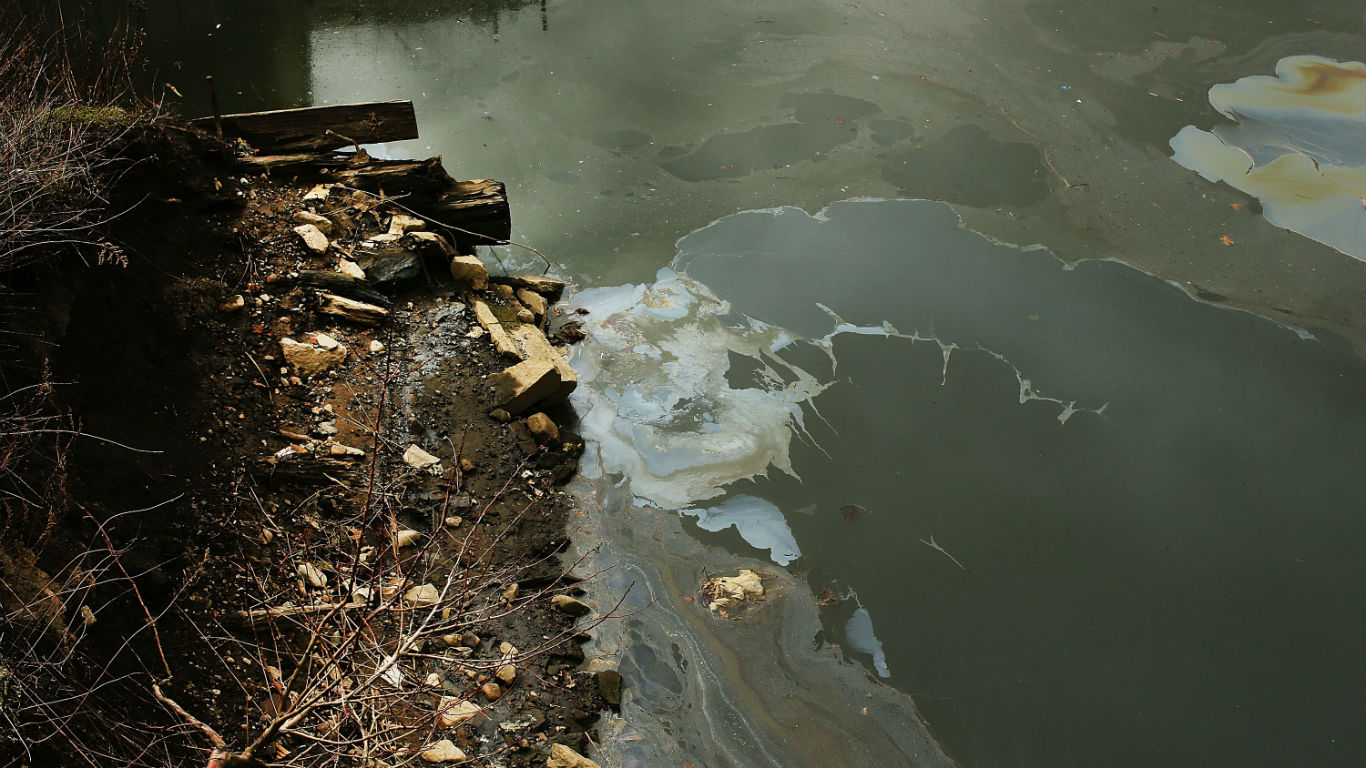
Published:
Last Updated:

The Environmental Protection Agency created the Superfund program in 1980 to clean up some of the nation’s most contaminated land and respond to environmental emergencies, oil spills, and natural disasters.
The goals of the Superfund are to protect the health of people and the environment by cleaning up contaminated sites; make those responsible pay for the cleanup work; get communities involved in the process; and return the sites to productive use. Cleaning up toxic waste is a hazardous business. Here are the most dangerous jobs in America.
24/7 Tempo reviewed data from the Environmental Protection Agency to determine the most hazardous contaminated places and where they are.
As of Nov. 8, there were 1,335 Superfund sites in the United States and its territories. New Jersey, the nation’s fifth-smallest state, has the most Superfund sites with 114, a vestige of its heavy industrial past. North Dakota has no Superfund sites. The Superfund sites include previous manufacturing facilities, processing plants, mining sites, and landfills. These are the countries that produce the most waste.
The Superfund program was created following much-publicized stories about hazardous waste in the late 1970s — such as the notorious Love Canal disaster near Niagara Falls, New York, where toxic industrial waste bubbled up into backyards and cellars. Mining and the early days of the Industrial Revolution have left a toxic legacy that still needs to be remedied today.
Click here to see the most hazardous contaminated places and where they are.
Click here to read our methodology.

23. Kerr-McGee Chemical Corp – Jacksonville
> Hazard Ranking System score: 70.7
> Location: Jacksonville, Florida
> Listing Date 3/4/2010
The Kerr-McGee Chemical Corp. is a 31-acre Superfund site on the west bank of the St. Johns River near the port area of Jacksonville. The site is where the company produced fertilizer and pesticides for 85 years until 1978. The EPA put the site on the Superfund list in 2010 because of tainted soil and groundwater but said the contaminated area does not pose a threat to those living and working at the site. The Florida Department of Environmental Protection and Tronox, the successor to Kerr-McGee, have taken action to shield people and the environment from contamination.
[in-text-ad]
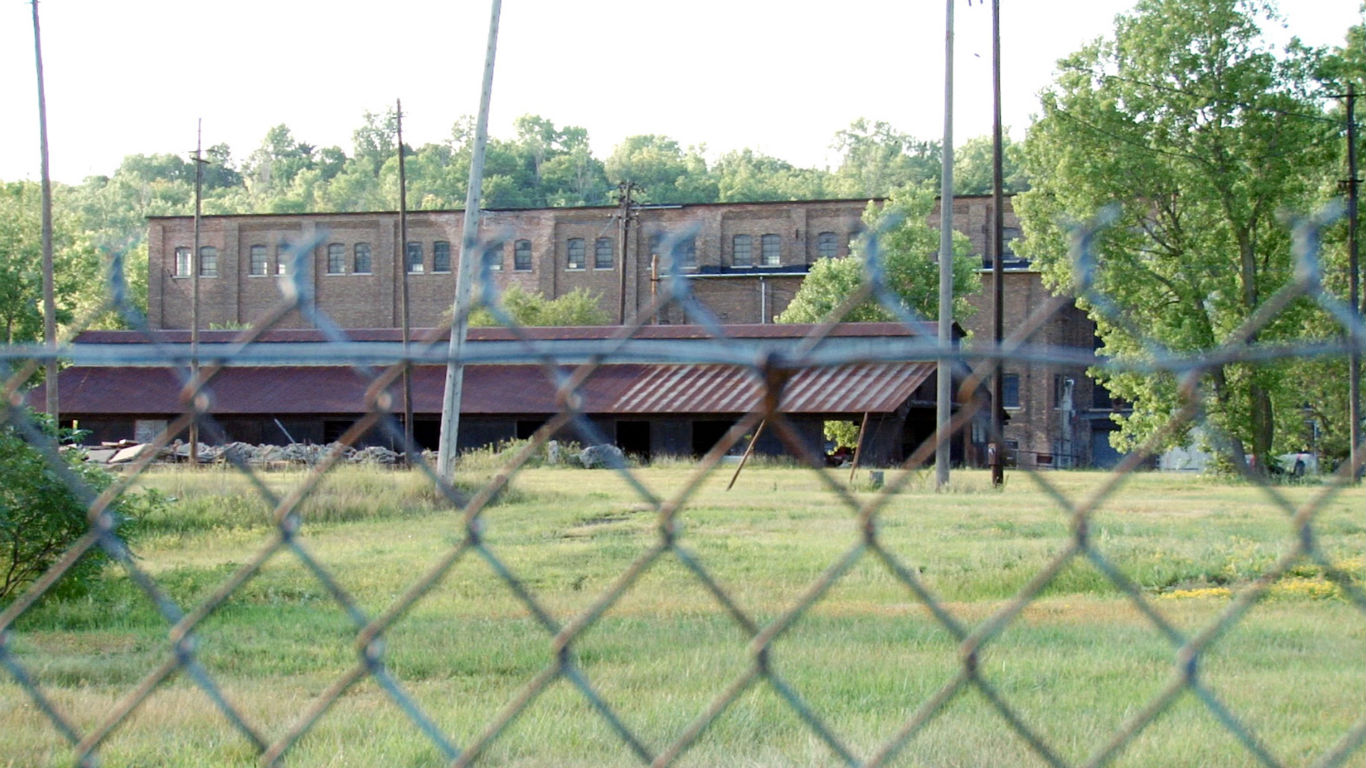
22. DePue/New Jersey Zinc/Mobil Chemical Corp.
> Hazard Ranking System score: 70.7
> Location: DePue, Illinois
> Listing Date 5/10/1999
The DePue/New Jersey Zinc/Mobil Chemical Corp. site is located in DePue, Illinois, a town of about 1,800 people, located roughly 115 miles west of Chicago. The site contained a zinc smelting facility and a phosphate fertilizer plant has been located in the 950-acre area. It was determined that the area was contaminated with zinc, lead, arsenic, cadmium, chromium, and copper. The Illinois EPA had been overseeing the cleanup of the site but has requested that the federal environment agency takes the lead role because of an impasse in talks with those responsible for the contamination, which include ExxonMobil.

21. Eastland Woolen Mill
> Hazard Ranking System score: 70.7
> Location: Corinna, Maine
> Listing Date 7/22/1999
The Eastland Woolen Mill made and dyed wool and blended woven fabrics until the 25-acre site in Corinna, Maine, closed in 1996. Corinna is 25 miles northwest of Bangor, Maine. The dyes were reported to contain biphenyl and chlorinated benzene, compounds the EPA considers hazardous. The federal EPA said that liquid waste was discharged to the ground surface underneath the mill buildings until 1977. Hazardous materials and the mill were removed from the site. About 10,000 pounds of contamination were removed from the soil. Cleanup and environmental monitoring efforts are continuing.

20. Southwest Jefferson County Mining
> Hazard Ranking System score: 70.7
> Location: Jefferson County, Missouri
> Listing Date 9/23/2009
Southwest Jefferson County Mining is a Superfund site located about 37 miles southwest of St. Louis. Mining in Jefferson County’s northern region — also known as the Old Lead Belt — began in the early 1700s. Mine waste such as lead has contaminated soil, surface water, and groundwater. The EPA is supervising remediation efforts at the site. These efforts include excavation and disposal of tainted soil to reduce health and environmental risks.
[in-text-ad-2]

19. Beede Waste Oil
> Hazard Ranking System score: 70.7
> Location: Plaistow, New Hampshire
> Listing Date 12/23/1996
The Superfund site Beede Waste Oil is located in Plaistow, New Hampshire, about 36 miles west of Manchester and 25 miles east of Nashua, New Hampshire’s two largest cities. The company operated a waste oil storage and recycling plant on its site from the 1920s to 1994. A tributary of the Little River flows near the border of the site, and the water is contaminated with waste oil. After the facility was closed, toxic polychlorinated biphenyls (PCBs) were found in the oil that was contained in the tanks and drums. Trucks began to transport tainted soil from the site starting in February 2013 and remediation is continuing.
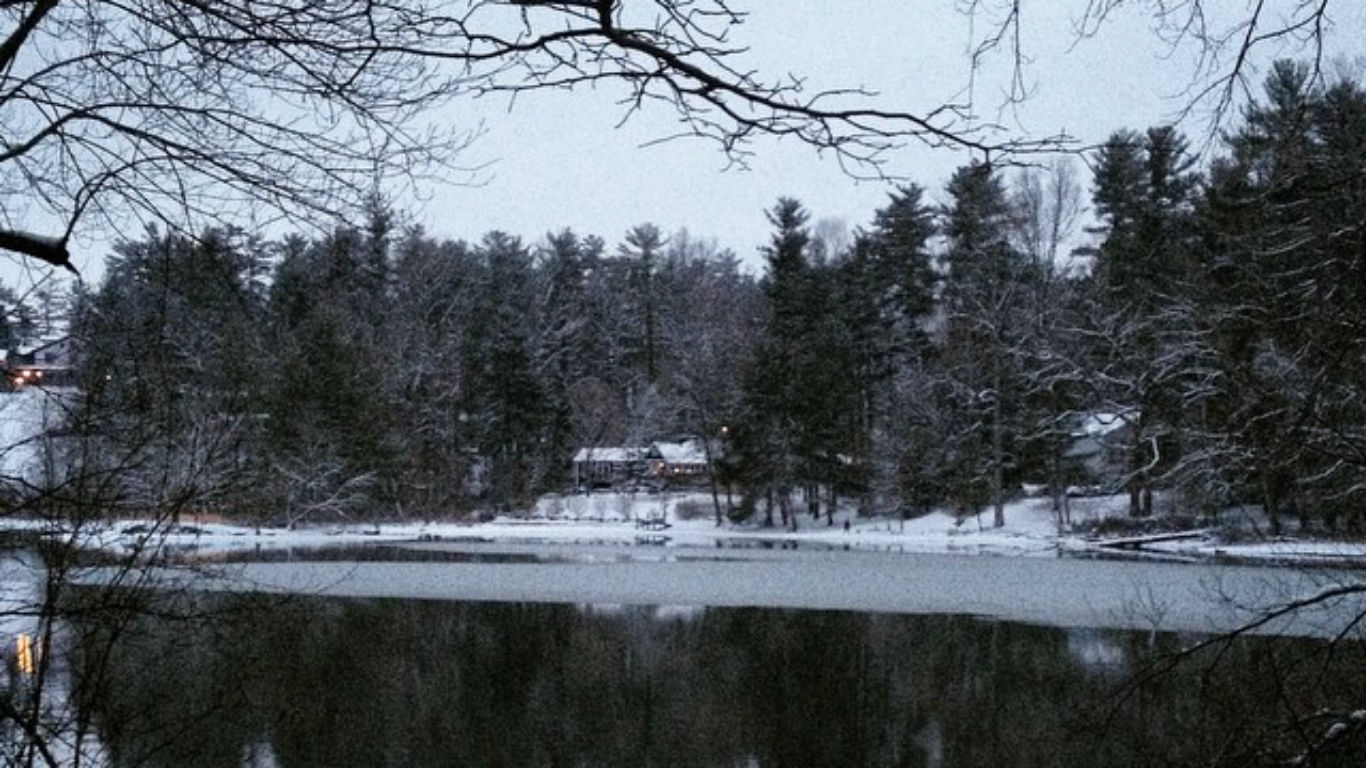
18. General Electric Co/Shepherd Farm
> Hazard Ranking System score: 70.7
> Location: East Flat Rock, North Carolina
> Listing Date 12/16/1994
General Electric Co/Shepherd Farm is 101 miles west of Charlotte, North Carolina, and GE operated a manufacturing facility there. The EPA put the site on its National Priorities List in 1994, citing groundwater and soil that was contaminated by poor waste handling at the 141-acre site. The EPA, the North Carolina Department of Environment and Natural Resources, and GE have taken action to clean up the site, which the EPA said does not pose a threat to those living and working there.
[in-text-ad]
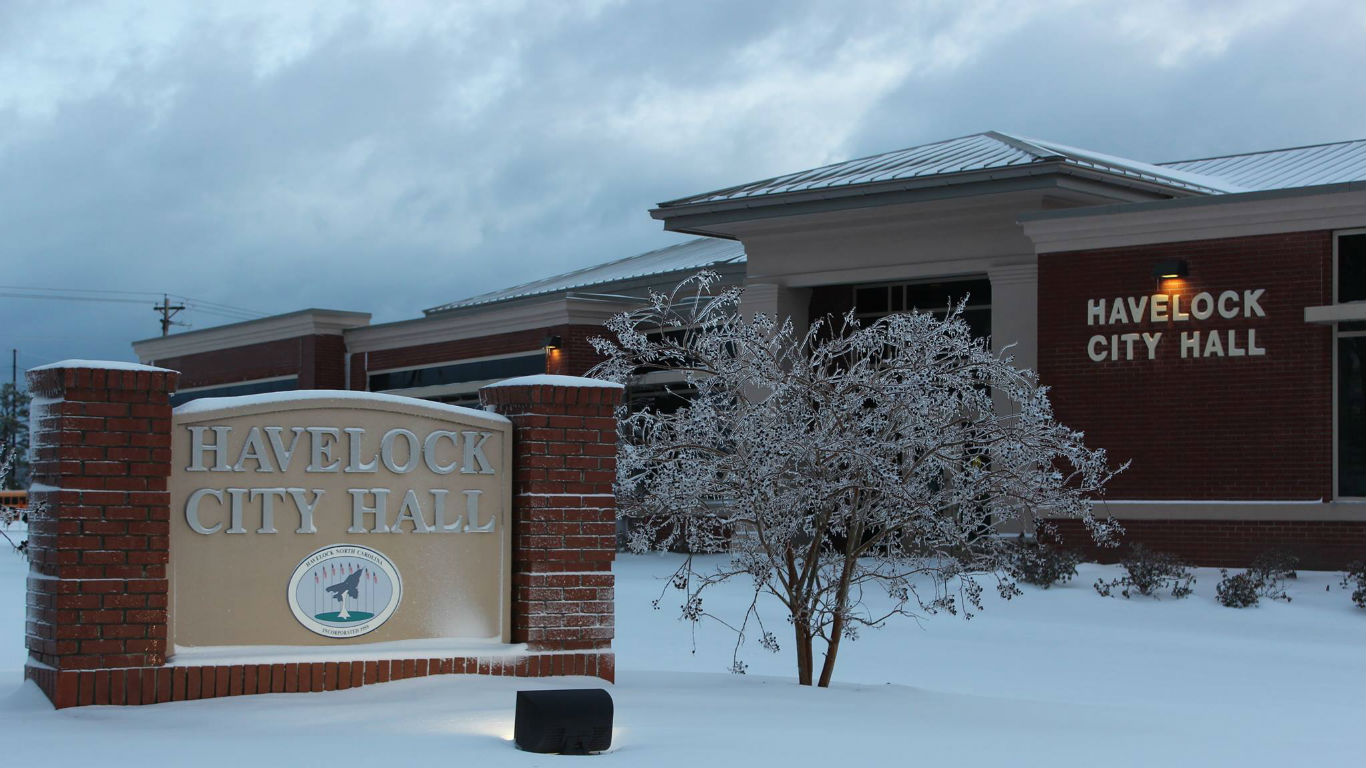
17. Cherry Point Marine Corps Air Station
> Hazard Ranking System score: 70.7
> Location: Havelock, North Carolina
> Listing Date 12/16/1994
Cherry Point Marine Corps Air Station opened in 1942 and was placed on the EPA’s National Priorities List in 1994 because of contaminated soil, sediment, and surface water caused by the installation’s operations. The EPA said the contamination at the site does not pose a risk to those living and working there. However, the EPA, the North Carolina Department of Environment and Natural Resources, and the Navy have made efforts to clean up the 13,164-acre site, located about 30 miles from the Atlantic Ocean, to protect people and the environment from contamination.
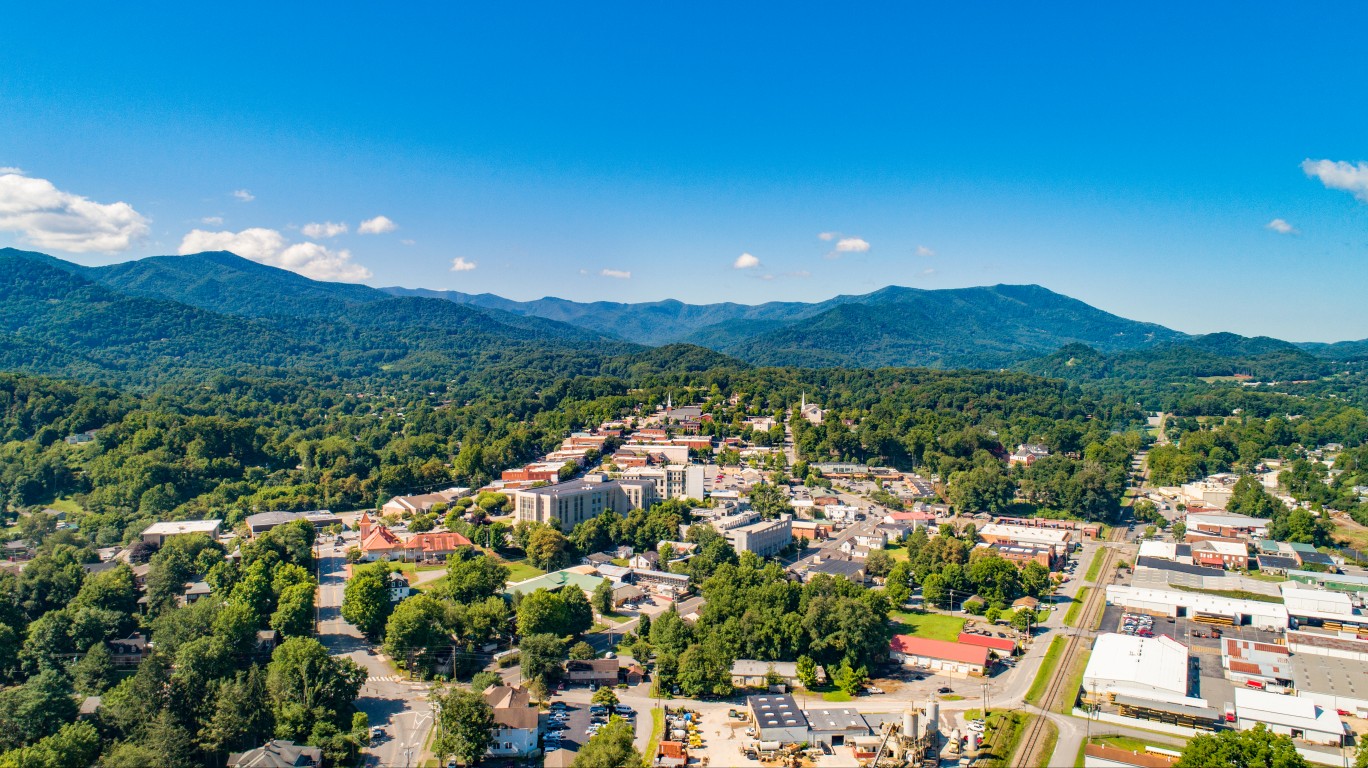
16. Barber Orchard
> Hazard Ranking System score: 70.7
> Location: Waynesville, North Carolina
> Listing Date 9/13/2001
Barber Orchard, the third of three Superfund sites from North Carolina on this list, was a 438-acre apple orchard in western North Carolina that operated on the side of a mountain from 1908 to 1988. The EPA placed the site on its National Priorities List in 2001 because of contaminated groundwater and soil from pesticides and insecticides sprayed on trees and fruit. The EPA says the site does not pose a risk to those living and working there. The EPA and the North Carolina Department of Environment and Natural Resources continue to monitor the site, which is located near residential properties.
15. Reynolds Metals Company
> Hazard Ranking System score: 70.7
> Location: Troutdale, Oregon
> Listing Date 12/16/1994
The 800-acre site of the Reynolds Metals Company, located about 17 miles east of Portland, Oregon, near the Columbia River, included an aluminum smelter, which operated from 1941 to 2000. During its operation, vast quantities of waste from the production of aluminum tainted groundwater, soil, and sediment with heavy metals and organic chemicals. Reynolds ended operations there in 2000. The EPA completed the second five-year review of the site’s remedy in 2013 and said the treatment is able to protect people and the environment in the short-term. The groundwater treatment system has to be evaluated to determine if it can be optimized.
[in-text-ad-2]
14. Safety Light Corporation
> Hazard Ranking System score: 70.7
> Location: Bloomsburg, Pennsylvania
> Listing Date 4/27/2005
Self-illuminated watches, instrument dials, and smoke detectors were among products made from the 1940s to the 1960s at the 10-acre Safety Light Corporation site in Bloomsburg, Pennsylvania, in the central part of the state. The products contained radioactive materials, and the site’s buildings, where the U.S. Radium company once operated, were tainted with such radioactive materials as radium, strontium, cesium, and tritium. After the EPA put the site on its National Priorities List in 2005, the contaminated structures were demolished by 2015 and removed. Removal of tainted soil and sediment continues.

13. Watson Johnson Landfill
> Hazard Ranking System score: 70.7
> Location: Richland Township, Pennsylvania
> Listing Date 9/13/2001
Watson Johnson Landfill operated from the late 1950s to the early 1970s before the EPA put the site on its National Priorities List in 2001. Volatile organic compound (VOC) from the landfill contaminated some home wells and posed a health concern. A water main connection to residential wells threatened by the contamination was completed by 2006, and the EPA says no private drinking water wells are located near groundwater contamination.
[in-text-ad]

12. Centredale Manor Restoration Project
> Hazard Ranking System score: 70.7
> Location: North Providence, Rhode Island
> Listing Date 2/4/2000
The Centredale Manor Restoration Project, located about four miles northwest of Providence, Rhode Island, is the site of chemical manufacturing and drum reconditioning operations that took place from the early 1940s to the early 1970s. A fire destroyed most of the structures there in 1972. Because of previous operations at the site chemicals seeped into the ground and fed into the Woonasquatucket River and tainted sediment, streams, and ponds. EPA investigations from 1999 to 2012 revealed contamination of soil, groundwater, sediment, and surface water that contained dioxin and polychlorinated biphenyls, compounds the EPA regards as hazardous. The EPA took cleanup action from 1999 to 2002 and brought litigation against responsible parties that resulted in a $100 million cleanup plan in 2018.

11. Former Nansemond Ordnance Depot
> Hazard Ranking System score: 70.7
> Location: Suffolk, Virginia
> Listing Date 7/22/1999
As the name would suggest, the Nansemond Ordnance Depot in Suffolk, Virginia, was where the army stored ammunition between 1917 and 1960. The site was also used by the Navy at the end of World War II to destroy explosives, ammunition, and chemicals. An abandoned landfill is on also on the site. The location of the Superfund site is near the Nansemond River and about 35 miles south of Newport News, Virginia. So far, the U.S. Army Corps of Engineers has removed about 400 munitions from the former ordnance depot that were considered live and warranted deactivation or disposal. Munitions removal activities considered by the EPA as non-critical continue.

10. Pacific Sound Resources
> Hazard Ranking System score: 70.7
> Location: Seattle, Washington
> Listing Date 5/31/1994
Pacific Sounds Resources is an 83-acre site located on the south shore of Elliott Bay on Puget Sound. From 1909 to 1994, a wood-preserving plant operated there using creosote, pentachlorophenol, and metal-based solutions of copper, arsenic, and zinc. Much of that material spilled or leaked into the ground from treated wood products, contaminating the soil and groundwater. The Port of Seattle completed cleanup efforts in part of the area between 1996 and 1998, and the U.S. Army Corps of Engineers finished its remedial work at the site in 2005. The Port of Seattle is continuing maintenance at the site.
[in-text-ad-2]

9. Pearl Harbor Naval Complex
> Hazard Ranking System score: 70.8
> Location: Pearl Harbor, Hawaii
> Listing Date 10/14/1992
The Pearl Harbor Naval Complex site in Pearl Harbor, Hawaii, includes about 12,600 acres of land and water. It is an active military facility, and military-related activities there have contaminated soil, sediment and groundwater with metals, organic compounds and petroleum hydrocarbons. Environmental agency investigation and cleanup efforts continue. The EPA says the site poses no immediate threat to people or the environment.
8. Taylor Lumber and Treating
> Hazard Ranking System score: 71.8
> Location: Sheridan, Oregon
> Listing Date 6/14/2001
Taylor Lumber and Treating in Sheridan, Oregon, is about 58 miles southwest of Portland, the biggest city in Oregon. Taylor Lumber operated a wood-treating plant in Sheridan from 1946 to 2001. During that time, wood-treating chemicals like creosote pentachlorophenol tainted the groundwater and soil at the site. The site was added to the National Priorities List in 2001, and beginning three years later, the EPA started removing contaminated soils. A concrete reinforcement wall was built to contain the most contaminated groundwater. Since the initial site cleanup was completed, the Oregon Department of Environmental Quality has been tasked with monitoring the site.
[in-text-ad]
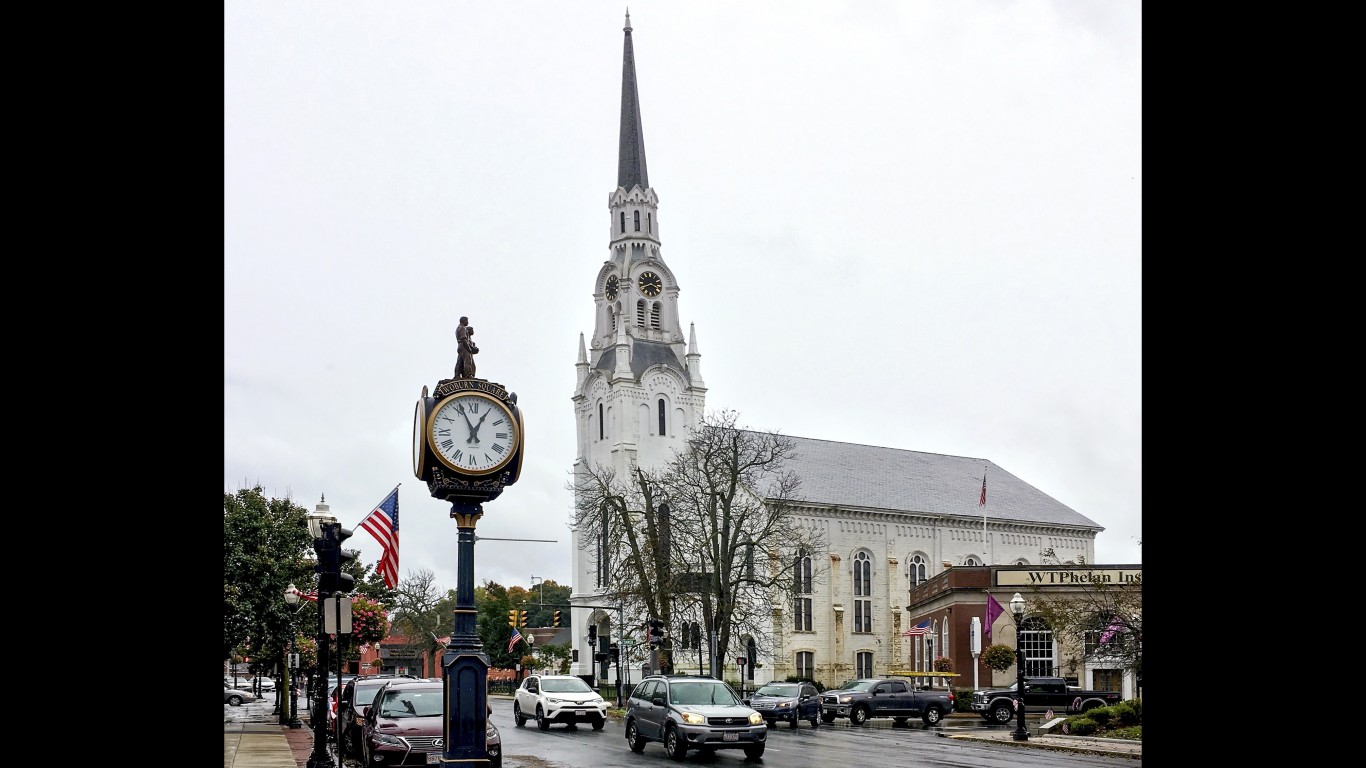
7. Industri-Plex
> Hazard Ranking System score: 72.4
> Location: Woburn, Massachusetts
> Listing Date 9/8/1983
There has been some type of manufacturing plant at the Woburn, Massachusetts, site since the mid-1800s, at the dawn of the Industrial Revolution. From 1853 to 1931, the site was used to make manufacturing chemicals such as lead-arsenic insecticides, acetic acid, and sulfuric acid for textile, leather, and paper manufacturing companies.
The soil became contaminated from the residue from arsenic, lead, and chrome. Later, the site was used to manufacture glue from raw animal hide until 1969. The residue from the hides and the release of hydrogen sulfide gases from the hides created a toxic environment threatening residences within 3 miles of the site. Cleanup has consisted of two longer-term remedial efforts to stabilize the site and the cleanup of groundwater contamination. Cleanup began in 1986 and continues today.
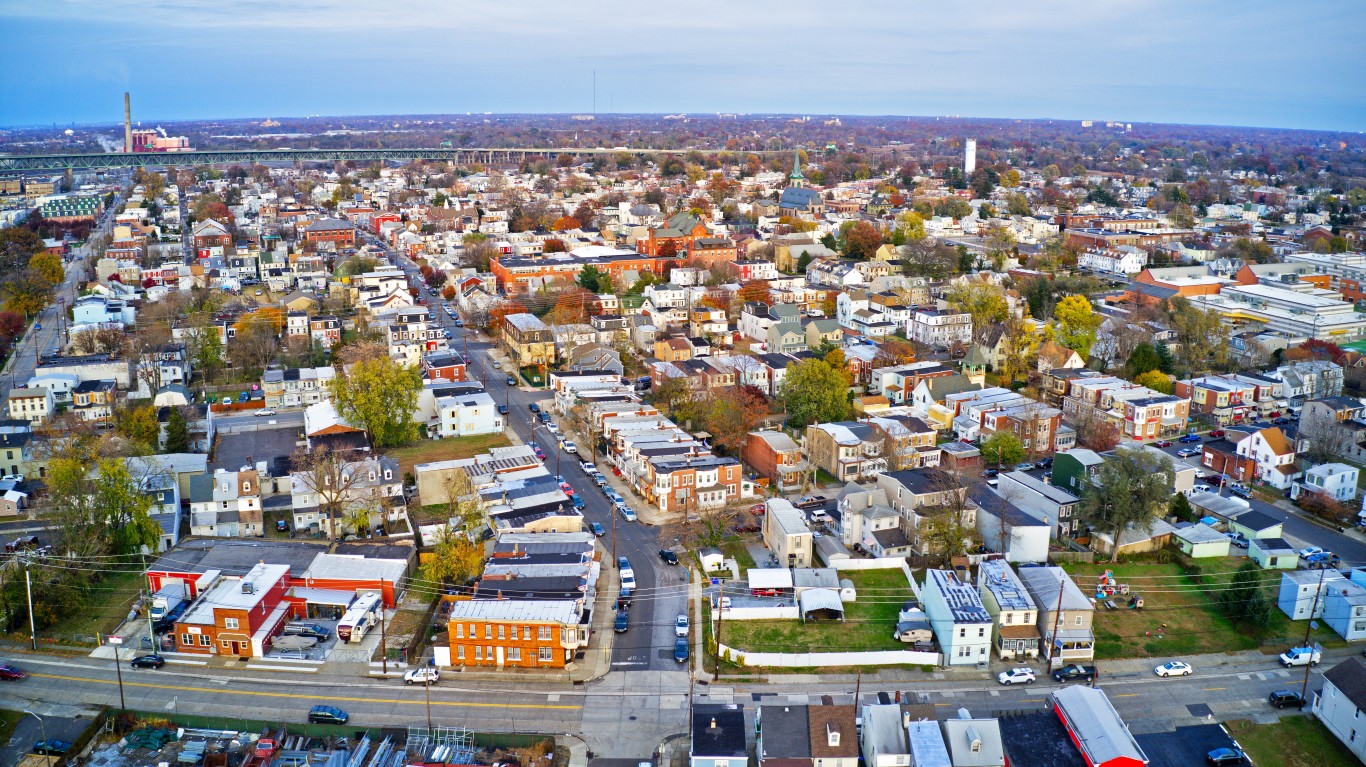
6. Helen Kramer Landfill
> Hazard Ranking System score: 72.7
> Location: Mantua Township, New Jersey
> Listing Date 9/8/1983
Mantua Township is located about 16 miles southeast of Philadelphia. A sand and gravel pit originally operated at the 66-acre site, which became a landfill in the early 1960s until it closed in 1981. During that time, various wastes were disposed there, such as municipal wastes, septage, and industrial wastes that contaminated groundwater with hazardous chemicals. After the site was placed on the EPA’s National Priorities List in 1983, cleanup commenced. A five-year review report issued by the EPA in September 2015 found that the cleanup effort protects people and the environment. An evaluation to ensure groundwater migrating towards Edwards Run is effectively contained still has to take place.

5. McCormick & Baxter Creosoting Co.
> Hazard Ranking System score: 74.9
> Location: Stockton, California
> Listing Date 10/14/1992
The McCormick & Baxter Creosoting Co. site, situated on 29 acres, is a former wood-preserving facility in Stockton, California, about 83 miles east of San Francisco. The site treated utility poles and railroad ties from 1942 to 1990, and those activities contaminated soil and groundwater with pentachlorophenol (PCP), dioxin, polycyclic aromatic hydrocarbons, and non-aqueous phase liquids, which are all considered hazardous.
[in-text-ad-2]
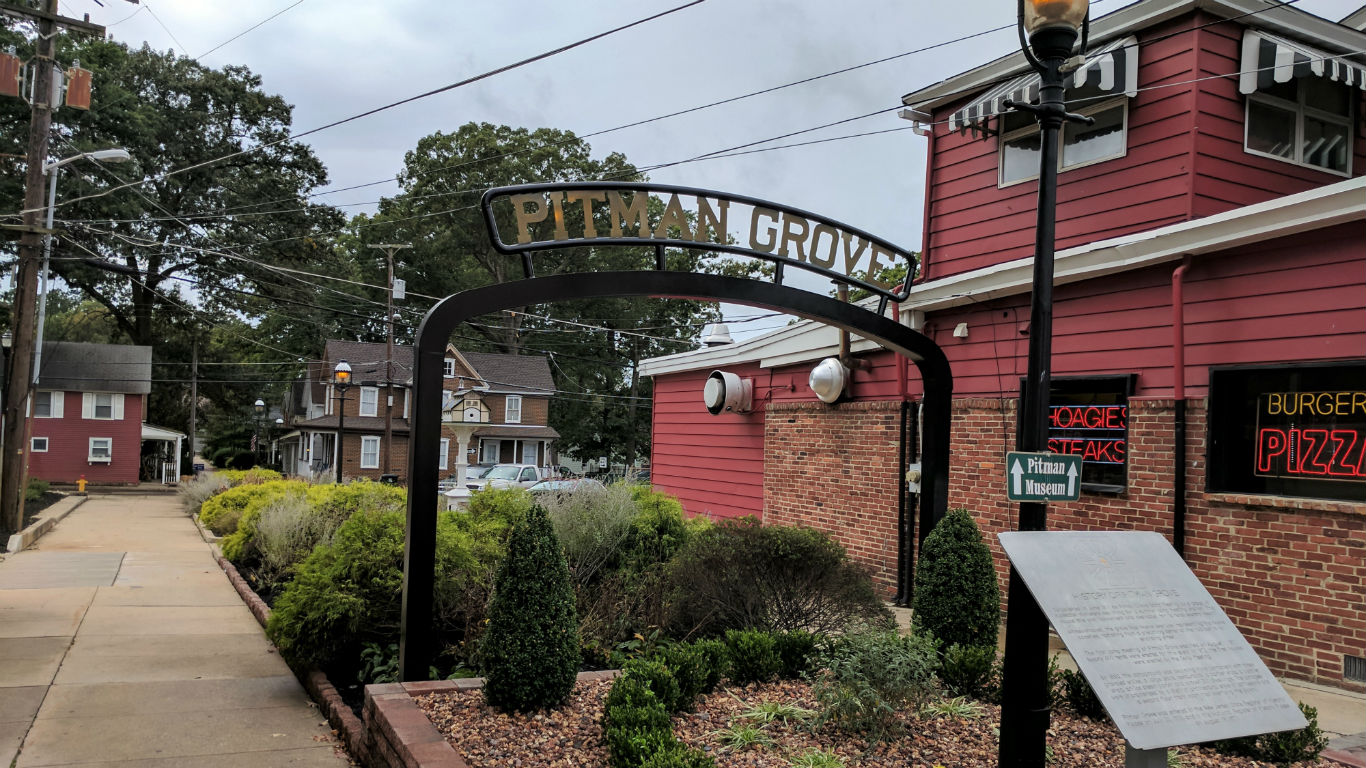
4. Lipari Landfill
> Hazard Ranking System score: 75.6
> Location: Pitman, New Jersey
> Listing Date 9/8/1983
The Lipari Landfill is located in Pitman, New Jersey, about 20 miles south of Philadelphia. The 16-acre site includes a 6-acre landfill that was in use from 1958 to 1971. Over that time, the landfill took in household, chemical, and industrial wastes. Some of the wastes included solvents, paints and thinners, and formaldehyde and seeped into aquifers and marshlands. The first cleanup actions to these contaminants were completed in the 1980s. Landfill contamination was capped, and tainted groundwater was treated. Groundwater and surface water continue to be monitored.
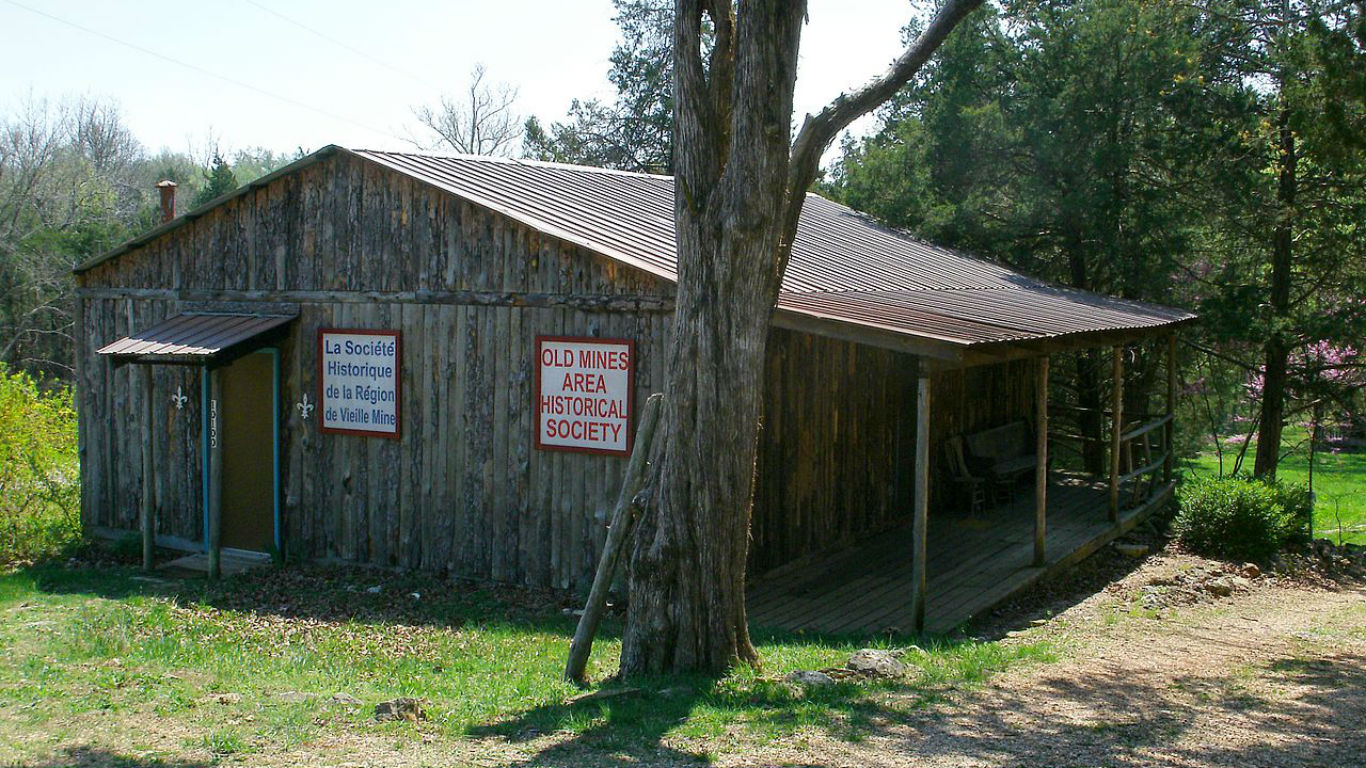
3. Washington County Lead District – Old Mines
> Hazard Ranking System score: 76.8
> Location: Old Mines, Missouri
> Listing Date 3/19/2008
Washington County Lead District – Old Mines is about 65 miles south of St. Louis and is part of the Old Lead Belt, where lead has been mined for hundreds of years. Eighty percent of America’s lead used to come from this region. Groundwater, soil, surface water, and sediment have been tainted by arsenic, barium, cadmium, and lead. Over time, residences have been built near the site, and there is concern drinking water and soil have been contaminated. The EPA began to clean lead-tainted soil at a school, and the agency had to provide water filtration devices for homes where the presence of lead in water exceeded the unhealthy levels. The EPA is looking to provide an alternate source of drinking water for affected residents.
[in-text-ad]
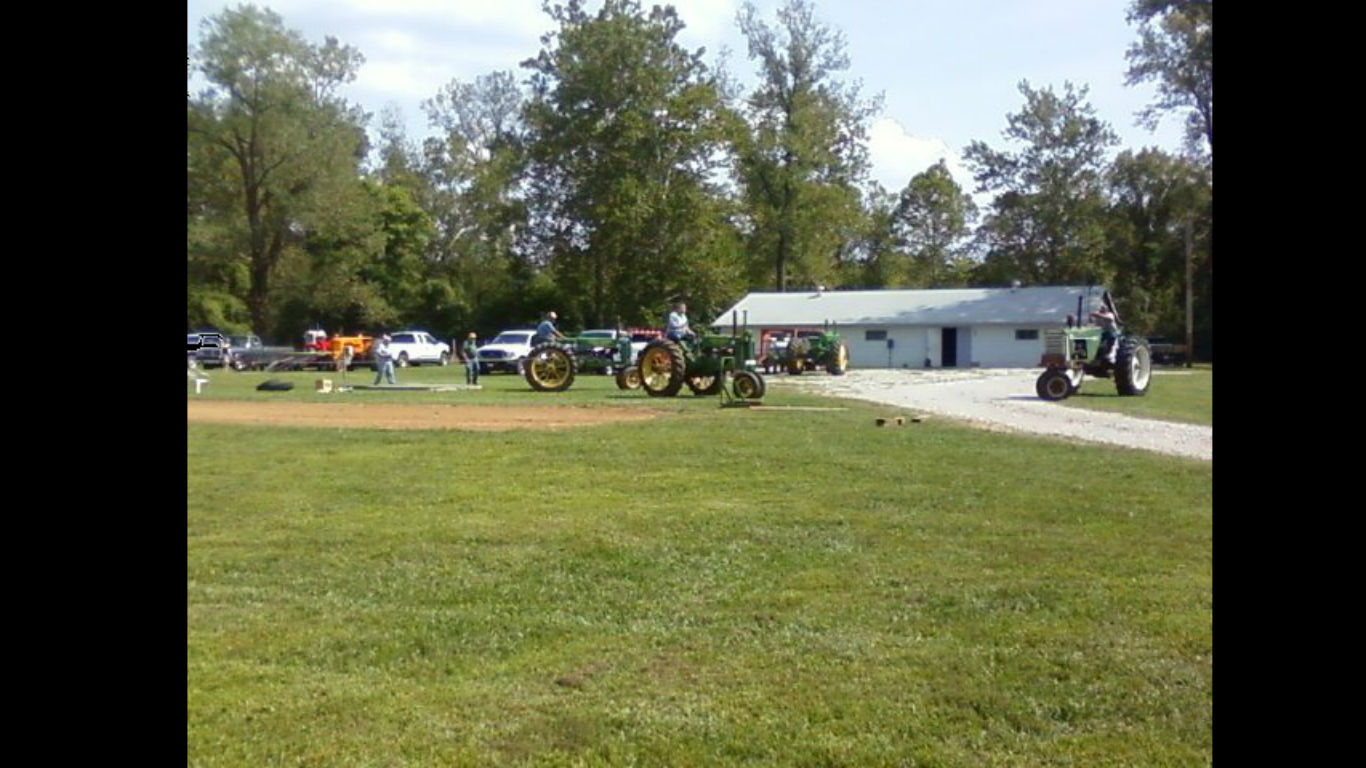
2. Washington County Lead District – Richwoods
> Hazard Ranking System score: 76.8
> Location: Richwoods, Missouri
> Listing Date 3/19/2008
Washington County Lead District – Richwoods Old Mines, is about 57 miles south of St. Louis. The 45-square-mile area is another part of the region’s Old Lead Belt. It also shares the legacy of tainted groundwater, soil, surface water, and sediment by arsenic, barium, cadmium, and lead. Residences have been built over mine waste, and some residents, unaware of the health implications, have even used the waste for gravel driveways. There is concern that drinking water and soil have been contaminated. The EPA has provided water filtration devices for homes where the presence of lead in the water exceeds the healthy levels. According to the EPA, one in seven drinking water supply wells qualify for a water filtration system.
1. Big River Mine Tailings/St. Joe Minerals Corp.
> Hazard Ranking System score: 84.9
> Location: Desloge, Missouri
> Listing Date 10/14/1992
Big River Mine Tailings/St. Joe Minerals Corp., 62 miles southwest of St. Louis, is the third of three Superfund sites on the list located in the Old Lead Belt in Missouri. The site includes eight big sections of mine waste, about 110 square miles. In 1977, as a result of torrential rains, about 50,000 cubic yards of sludge containing mining waste to drifted into the Big River. Besides lead, other minerals such as cadmium and zinc were present. Because of raised lead levels, people were advised not to eat fish caught downstream from the Big River. The eight areas of mine waste are being stabilized to prevent sloughing. The cleanup process began in 1995.
Methodology
24/7 Tempo reviewed the 23 Superfund sites determined to be the most hazardous, based on the site’s assigned Hazardous Ranking System (HRS) score determined by the Environmental Protection Agency. Any score higher than 28.5 is deemed a serious enough hazard by the EPA to merit Superfund spending.
The EPA determines the HRS of a site based on three main categories of risk: The likelihood that a site is releasing — or has the potential to release — hazardous substances into the environment; the toxicity of the waste and how much of it there is; and the proximity of the waste to people. It is important to note that these sites are being cleaned, and some have had their contaminants removed since the HRS assessment grade listed was made.
Start by taking a quick retirement quiz from SmartAsset that will match you with up to 3 financial advisors that serve your area and beyond in 5 minutes, or less.
Each advisor has been vetted by SmartAsset and is held to a fiduciary standard to act in your best interests.
Here’s how it works:
1. Answer SmartAsset advisor match quiz
2. Review your pre-screened matches at your leisure. Check out the advisors’ profiles.
3. Speak with advisors at no cost to you. Have an introductory call on the phone or introduction in person and choose whom to work with in the future
Thank you for reading! Have some feedback for us?
Contact the 24/7 Wall St. editorial team.